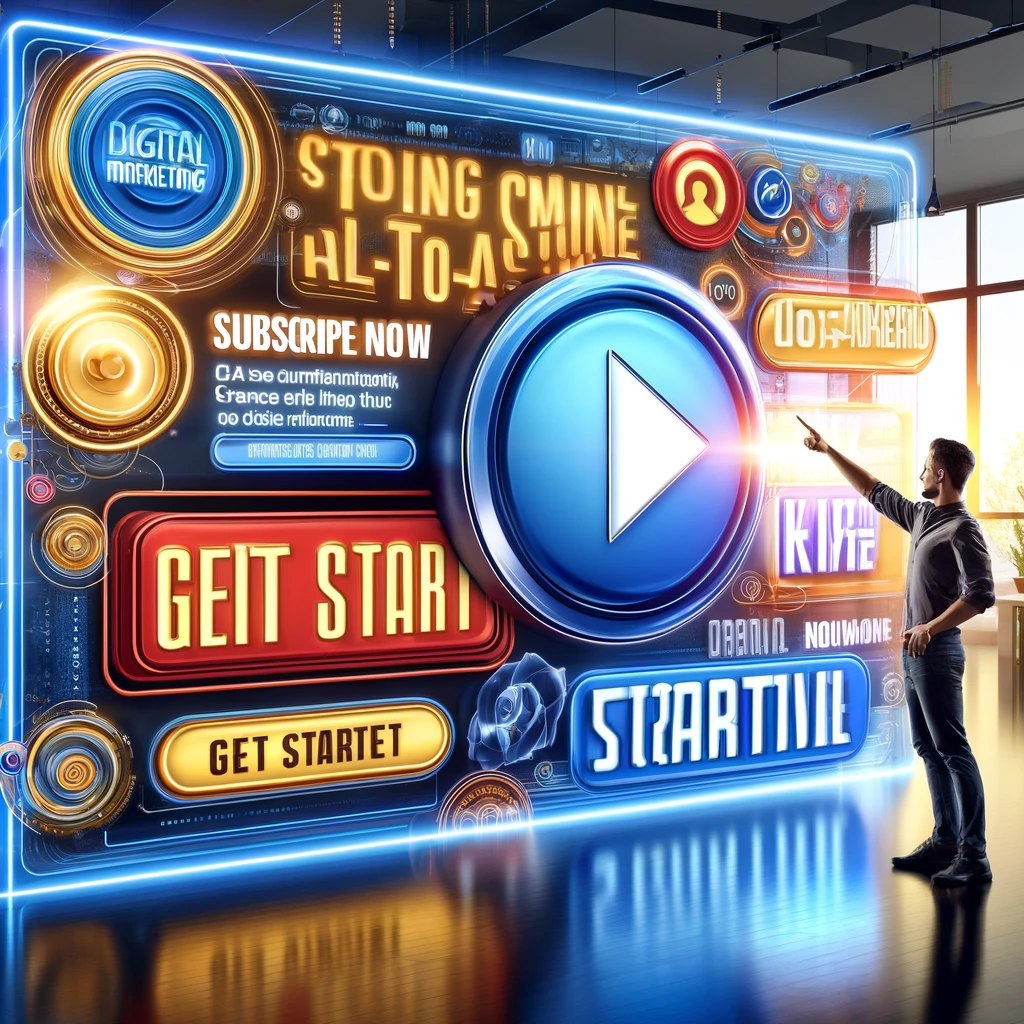Product descriptions are what persuades potential customers to make a purchase. Highlighting the benefits of your products, and ultimately driving sales.

Introduction to Product Descriptions
Seasoned marketer or a beginner in the world of e-commerce, and online shops, mastering product copywriting techniques can significantly impact your success. Learning how to communicate the value of your products and engage your readers will create product pages that stand out and drive conversions.
Key Points
In this guide, we’ll cover a range of copywriting techniques tailored specifically for product pages.
- Product descriptions that speaks to your readers and potential customers.
- Unique benefits and features of your products.
- Product pages for search engines and visibility.
1. Understanding Your Audience

Knowing who you’re targeting, you can tailor your product descriptions to their needs and preferences.
Know Your Target Market
- Conduct thorough research: Take the time to gather data on your target audience, including demographics such as age, gender, location, and income level.
- Analyse interests and preferences: Understand what interests your audience, their hobbies, lifestyle choices, and preferences when it comes to products similar to yours.
- Use market segmentation: Divide your audience into segments based on common characteristics or behaviours to better target your copywriting efforts.
Speak Their Language
- Use familiar language: Communicate in a way that your audience can relate to, using words and phrases they commonly use in everyday life.
- Understand their pain points: Identify the challenges or problems your audience faces and address them directly in your product descriptions.
- Show empathy: Demonstrate empathy towards your audience’s needs and concerns, showing that you understand and care about their experience.
Relevant Keywords
- Conduct keyword research: Use tools like Google Keyword Planner or SEMrush to identify relevant keywords related to your products and industry.
- Integrate keywords naturally: Incorporate these keywords seamlessly into your product descriptions, ensuring they flow naturally and enhance readability.
- Focus on long-tail keywords: Targeting specific, long-tail keywords can help you reach a more targeted audience and improve your chances of ranking higher in search engine results pages (SERPs).
2. Headlines

Capturing your audience’s attention with catchy headlines is important for driving engagement and encouraging visitors to explore your product further. Here’s how you can create headlines that stand out and compel action.
Grab Attention with Product Descriptions
- Be creative and intriguing: Use attention-grabbing words or phrases that pique curiosity and compel visitors to click on your product page.
- Pose a question: Engage your audience by posing a thought-provoking question that prompts them to learn more about your product.
- Create urgency: Incorporate words like “limited-time offer” or “exclusive deal” to create a sense of urgency and encourage immediate action.
Highlight Benefits
- Focus on the main benefit: Use your headline to highlight the primary benefit or unique selling point of your product, showcasing what sets it apart from the competition.
- Solve a problem: Address a common pain point or problem faced by your audience and position your product as the solution.
- Appeal to emotions: Tap into the emotions of your audience by highlighting how your product can improve their lives or fulfil their desires.
Keep it Concise
- Stick to the point: Keep your headlines short and to the point, avoiding unnecessary words or details that could dilute the message.
- Use clear language: Ensure your headlines are easy to understand at a glance, using simple and straightforward language that resonates with your audience.
- Test different variations: Experiment with different headline lengths and formats to see which ones generate the highest click-through rates and engagement.
3. Emphasising Benefits Over Features
Crafting product descriptions that highlight the benefits over features is key to engaging your audience and driving conversions. Let’s explore how you can effectively emphasise the benefits of your product.
Focus on the ‘Why’
- Solve problems: Address the pain points or challenges your customers face and demonstrate how your product provides a solution. Use phrases like “solve your [problem]” or “make [task] easier” to showcase the practical benefits.
- Enhance experiences: Highlight how your product enhances the daily lives or experiences of your customers. Focus on the outcomes and results they can achieve by using your product, such as saving time or improving productivity.
Use Storytelling with Product Descriptions
- Craft narratives: Tell stories that illustrate the real-life benefits of your product in action. Share anecdotes or examples of how your product has positively impacted the lives of your customers. Use descriptive language to create a vivid picture of the benefits.
- Connect emotionally: Appeal to the emotions of your audience by showcasing how your product can make a difference in their lives. Use storytelling to create an emotional connection and evoke feelings of happiness, satisfaction, or relief.
Keep it Customer-Focused
- Address their needs: Tailor your product descriptions to address the specific needs and desires of your target audience. Use language that resonates with them and demonstrates an understanding of their preferences.
- Highlight value: Focus on the value your product provides to your customers, rather than just listing its features. Use phrases like “benefit from” or “enjoy the advantages of” to highlight the value proposition.
- Show empathy: Show empathy towards your customers by acknowledging their concerns or frustrations and positioning your product as the solution. Use phrases like “say goodbye to” or “experience the relief of” to convey empathy and understanding.
4. Creating Scannable Content

Making your product descriptions scannable is essential for ensuring that visitors can quickly and easily grasp the key information about your product. Here are some techniques to create scannable content that engages your audience.
Use Bullet Points in your Product Descriptions
- Organise information: Break down your product descriptions into bullet points to present information in a clear and structured manner.
- Enhance readability: Bullet points make it easier for readers to scan through the content and identify key features and benefits.
- Highlight key details: Use bullet points to highlight the most important aspects of your product, such as its unique selling points, features, and benefits.
- Improve SEO: Incorporate relevant keywords naturally within your bullet points to improve your product page’s search engine visibility.
Highlight Key Points
- Draw attention: Use formatting options like bold or italic text to make important features and benefits stand out.
- Emphasise benefits: Highlight the key benefits of your product using bold or italic formatting to ensure they capture the reader’s attention.
- Improve comprehension: By drawing attention to key points, you make it easier for readers to understand the value proposition of your product at a glance.
- Enhance SEO: Incorporate relevant keywords within your highlighted text to boost your product page’s search engine ranking.
Keep Paragraphs Short on your Product Descriptions
- Enhance readability: Break up your content into short paragraphs to prevent readers from feeling overwhelmed by large blocks of text.
- Maintain attention: Short paragraphs are easier to digest, helping to keep readers engaged and focused on your product description.
- Provide clarity: Each paragraph should focus on a single idea or aspect of your product, making it easier for readers to understand the information presented.
- Optimise for SEO: Utilise relevant keywords within your paragraphs to improve your product page’s search engine optimisation and attract more organic traffic.
5. Persuasive Language

Persuasive language aids readers to take action and make a purchase. Here are some effective techniques to incorporate persuasive language into your product descriptions.
Use Power Words in Product Descriptions
- Evoke emotion: Use powerful words that trigger emotional responses in your audience, such as “amazing,” “life-changing,” or “unforgettable.”
- Convey value: Use persuasive language to highlight the unique benefits and advantages of your product, using words like “exclusive,” “premium,” or “revolutionary.”
- Create excitement: Stir enthusiasm and excitement in your audience by using energetic and enthusiastic language that conveys a sense of excitement and anticipation.
- Enhance SEO: Integrate persuasive language and powerful words naturally within your product descriptions to improve your search engine ranking and attract more visitors to your product pages.
Create Urgency
- Prompt action: Use phrases that create a sense of urgency and encourage immediate action from your audience, such as “limited time offer,” “act now,” or “don’t miss out.”
- Highlight scarcity: Emphasise scarcity by mentioning limited quantities or time-sensitive deals to motivate potential buyers to make a purchase before it’s too late.
- Offer incentives: Provide incentives for immediate action, such as discounts, freebies, or bonus offers, to encourage your audience to take advantage of your offer right away.
- Boost conversions: Creating urgency in your product descriptions, you can increase conversions and drive sales by prompting your audience to act quickly.
Include Social Proof
- Build trust: Incorporate testimonials and reviews from satisfied customers to build trust and credibility with potential buyers. Use quotes or star ratings to showcase positive feedback and reassure hesitant shoppers.
- Provide evidence: Offer tangible evidence of your product’s quality and effectiveness by sharing real-life experiences and success stories from happy customers.
- Persuade potential buyers: Use social proof to persuade potential buyers to make a purchase by demonstrating the value and benefits of your product through the experiences of others.
- Enhance credibility: By including social proof in your product descriptions, you can enhance the credibility of your brand and products, making them more appealing to your target audience.
6. Optimising for SEO

Optimising your product pages for search engines is essential for improving your online visibility and attracting more organic traffic. Here are some key strategies to optimise your product copy for SEO.
Conduct Keyword Research for Product Descriptions
- Identify relevant keywords: Use tools like Google Keyword Planner or SEMrush to research keywords and phrases that are relevant to your product and have a high search volume.
- Focus on long-tail keywords: Target specific, long-tail keywords that reflect the unique features, benefits, or use cases of your product. These keywords are less competitive and more likely to attract qualified leads.
- Integrate naturally: Use your chosen keywords naturally into your product descriptions, ensuring they fit seamlessly within the context of the content.
Optimise Meta Tags
- Craft compelling meta titles: Write SEO-friendly meta titles that accurately describe your product and include relevant keywords. Keep them concise and compelling to encourage clicks in search engine results.
- Create informative meta descriptions: Write concise meta descriptions that summarise the content of your product page and entice users to click through. Include relevant keywords and a clear call to action to improve engagement.
- Utilise schema markup: Implement schema markup to provide search engines with additional context about your product, such as pricing, availability, and reviews. This can improve your visibility in search results and attract more qualified traffic.
Improve Site Structure
- Organise product pages logically: Ensure that your product pages are well-structured and organised, with clear navigation and hierarchy. Use categories and subcategories to group related products together, making it easier for users to find what they’re looking for.
- Create user-friendly URLs: Use descriptive and keyword-rich URLs for your product pages, making them easy for both users and search engines to understand. Avoid generic or cryptic URLs that provide little insight into the page’s content.
- Optimise internal linking: Include internal links between related product pages and other relevant content on your website. This helps search engines crawl and index your content more effectively, while also improving user navigation and engagement.
7. Strong Calls-to-Action for Product Descriptions

A compelling call-to-action (CTA) is essential for guiding visitors towards taking the desired action on your product pages. Here’s how you can create effective CTAs that drive engagement and conversions.
Be Clear and Concise
- Clearly state the action: Use straightforward language in your CTAs to clearly communicate the desired action, such as “Buy now,” “Add to cart,” or “Sign up.”
- Keep it concise: Avoid long-winded phrases and stick to short, direct CTAs that are easy to understand at a glance.
- Use imperative verbs: Start your CTA with an action verb to prompt an immediate response from your audience, such as “Discover,” “Get,” or “Explore.”
Create a Sense of Urgency with your Product Descriptions
- Use time-sensitive language: Incorporate words and phrases that create a sense of urgency and encourage immediate action, such as “Limited time offer,” “Hurry,” or “Last chance.”
- Highlight exclusivity: Emphasise the unique opportunity or benefits of acting now, such as “Exclusive deal for today only” or “Special offer for first-time customers.”
- Offer incentives: Provide incentives for taking immediate action, such as discounts, free shipping, or bonus gifts, to motivate visitors to complete the desired action without delay.
Make it Easy
- Ensure visibility: Make your CTAs visually prominent by using contrasting colours, bold fonts, or buttons that stand out against the rest of the page content.
- Keep it clickable: Ensure that your CTAs are easily clickable on both desktop and mobile devices, with sufficient spacing and size to accommodate tapping or clicking.
- Provide multiple access points: Place CTAs strategically throughout your product page, including at the top, middle, and bottom, to make it easy for visitors to take action no matter where they are on the page.
Conclusion on Copywriting Techniques for Your Product Pages
Using these copywriting techniques, you can create product pages that captivate your audience, drive conversions, and sales.
Key Takeaways on Product Descriptions
- Understand Your Audience: Knowing your target market inside and out, you will be able to tailor your product descriptions to resonate with their needs and preferences.
- Headlines: Grab attention with attention-grabbing headlines that highlight the main benefits of your products and entice visitors to explore further.
- Emphasise Benefits Over Features: Focus on the real-life benefits your products offer, using storytelling and persuasive language to create an emotional connection with your audience.
- Create Scannable Content: Break up your product descriptions with bullet points, highlight key points, and keep paragraphs short to improve readability and engagement.
- Persuasive Language: Use powerful words, create urgency, and include social proof to persuade potential buyers and compel them to take action.
- Optimise for SEO: Conduct keyword research, optimise meta tags, and improve site structure to enhance your product pages’ visibility in search engine results.
- Encourage Action with Strong CTAs: Be clear and concise with your calls-to-action, create a sense of urgency, and ensure they are visually prominent and easily clickable.
Copywriting is an ongoing process of testing, iterating, and refining. Keep monitoring your results, feedback, and adjust your approach for continued success and growth for you online shop.
Read more about types of copywriting for your shop and business.
If you liked this article, then please subscribe to our YouTube Channel for video tutorials and more. You can also find us on LinkedIn, Twitter and Pinterest.




